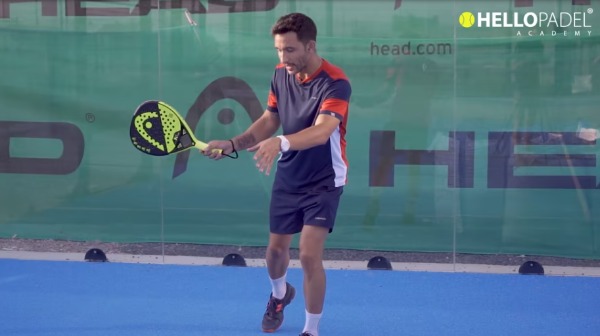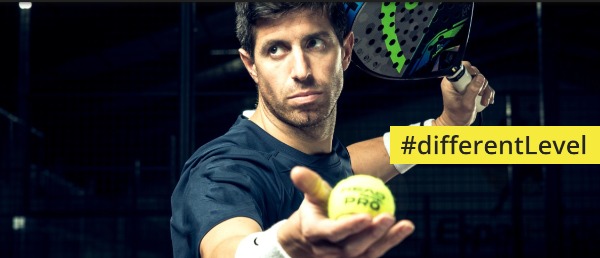1. Introduction to paddle hitting
Everyone knows tennis and most of us know its strokes, but for padel, do we know all the padel strokes that exist? More than a few!
So, in the following article, we will understand what cricket batting is all about.
let’s start!
2. Different cricket batting
We’ll be looking at all the cricket footage one by one. But before we get started, it is interesting that there is no general agreement on whether certain technical executions are considered independent strokes, or conversely, whether they are variants of strokes. For example, for some, a low wall forehand will be a forehand shot that has to bounce off the glass, but for others, it will be a different kind of shot. The same is true for returning the serve, is it an independent hit or a forehand or backhand?
Regardless, it’s important to understand the different technical moves that exist in padel and when to use them.
2.1.
– serve
The serve is the start of all scoring. If you miss your first serve, you have a second chance.
The two rules that most affect the padel serve are:
The ball must bounce before hitting it.
The maximum height to hit the ball is from the waist.
Generally speaking, the serve is usually towards the side wall, and unlike in tennis, the speed of the serve is not the decisive factor, because the goal after the serve is to reach the net and occupy the initiative of the attacking point. Plus, faster service means less time spent online. In padel competition, we can almost say that there is no such thing as an “ace”, because making one is very difficult.

2.2. – Forehand and backhand
The forehand and backhand cricket strokes are probably the easiest strokes and the first strokes we teach when we start cricket.
These shots involve hitting the ball on one side of our body and letting it bounce once on our side.
The goal with these shots is to be solid and not miss so that you can catch the point, gain the initiative or force your opponent to make a mistake.
It’s important to remember that forehand and backhand side shots are safer than straight shots because side shots are more natural from a physiognomy standpoint and we have more distance than straight shots.
Variations on basic forehand and backhand shots:
flat forehand
forehand slice
Topsin forehand
Backhand
backhand slice
backhand topspin

Sanyo – forehand and backhand
2.3. -Return
A return is a shot (forehand or backhand) used to return an opponent’s serve.
A shot that is not practiced often during practice. However, serving and returning are both very important strokes.
As a general rule, it’s best to return down the line or across the field, depending on where the server is coming from, since the server is moving towards the net and is not well positioned.
We only recommend the lob if your ball is easy and you are sure you will execute well, because if the ball is too short, your opponent will be able to hit it and have a chance to score points.
2.4. Padel strokes – away from the wall
If there’s one thing that stands out in cricket, it’s without a doubt the game of wall or glass. Anyone who plays padel can’t deny that they add fun and difficulty to the sport.
Due to this aspect of the game, we found ourselves shooting quite a few shots.
We can distinguish three types of wall shots:
back wall return
off the side wall
and double wall bounce
The off-the-wall lens is the basic but basic cricket lens. Possession is key and we cannot risk conceding the ball. This shot will be the basis for being able to execute correctly later on, the aggressive return of shots that bounce off the relatively high back wall.
The type of shot we perform and what we aim for after the ball bounces off the glass will depend on many factors such as the type of wall we are facing, the height of the bounce, how far the ball bounces, the location of the opponent’s…
2.5. WALL DECENT (bajada de pared)
There is a difference between “OFF” and “DOWN” in wall shots, therefore, we should separate them.
The downswing is an aggressive version of the normal off-the-wall shot. It’s an attacking shot whose goal is to accelerate the ball dramatically to win a point or force a turnover.
It’s a risky shot with a greater chance of mistakes, but with practice it can earn us a lot of points.
We should master normal off-the-wall shots before attempting this aggressive version.
For more information on wall shooting, check out our coaching area here
2.6. cricket batting–lob
The lob shot is probably one of the most underrated shots, especially at the amateur and intermediate levels, and the reality is, it’s one of the most important shots we should master if we want to be good players Most ways to hit the ball.
Executing a lob isn’t always a defensive shot, instead, executing a good lob is actually an offensive shot.
The main purpose of the lob is to overtake the opponent from above and immediately hit the net to gain the initiative of the attacking point.
Without being able to overtake our opponent, we should make sure our lob makes as much difficulty as possible for the opponent’s next shot, because if our lob is hit poorly, too short or too low, we will find ourselves in a position Very complex and difficult to restore.
The direction of the lob depends on our position and how easy it is to execute the lob, as well as the situation of the opponent.
2.7. Padel shooting – Chiquita
The shot, with its fancy name, involves hitting the ball at a very low speed in an attempt to hit the ball over the net and into the opponent’s feet quickly.
The idea behind this is that opponents must hit the ball from well below clear height, as close to the ground as possible. This will force them to lift the ball gently. If we execute well and get on the net fast, we can get a very good situation and just have to flick the ball out back to score the winner.
While it’s not a spectacular shot, it’s difficult because it requires a lot of intention, body control and a lot of touch to accompany the ball with the right amount of power and then go to the net to define the point.
2.8. PADEL SHOTS – Back Wall (Counter) (Comparison)
The back wall is often used as a last resort when it is not possible to return the ball directly to the opponent’s field.
Remember, this will be a very easy ball for the opposing partner if you don’t give the necessary height and depth. It is advisable to try to get a good height when hitting the ball so that there is also time to recover our position on the pitch.
2.9. – Forehand and backhand volleys
A volley involves hitting the ball before it hits the ground. As a general rule, we hit these shots close to the net, although there’s nothing stopping us from volleying them off the back glass.
The purpose of a padel volley is to leave the opponent’s partner behind, forcing fouls and creating free space.
It is recommended to hit the first volley into the middle of the pitch where there is more free space and then start to open the pitch.
Staying in front of the net and playing good aerial game and volleys will allow us to win points and reduce turnovers.
Communication is key when the two are at the net, as the ball in the middle often creates doubt or confusion as to which player has to pass the ball back.
Also, when you’re at the net, you have to be very alert and react quickly because you’ll have less time before the ball reaches you.
2.10. – Bandja
The strap in padel is one of the most characteristic padel strokes in the sport.
Solve your opponent’s mid-high lobs to avoid letting your opponent bounce and lose possession, or shoot from an unsatisfactory height and not score.
The strike zone is usually in the middle of the court, and the strike height is somewhere between a volley and a smash.
Generally speaking, it is recommended to play a cross-court tie, if you can execute it easily, and the risk is not too high, you can look for double walls, so that it is difficult for the opponent to counter easily.
The purpose of holding the ball is not to win points, but to not lose the position in front of the net and maintain the initiative of scoring. Therefore, after playing bandha, it is necessary to return to the net quickly and accompany the partners who may remain at the net.
2.11. – the vIBora
Along with the smash, the vibration shot is one of the sport’s most distinctive scoring shots.
This is an advanced level shot and certainly one of the most difficult to execute correctly and effectively.
Although its hitting height and area of execution are similar to Bandhar hitting, there are differences from the latter such as giving the ball more side spin, more power, different intentions.
The purpose of vibora is to score points by forcing the opponent to make mistakes or by making him/her leave us with a very comfortable ball and then finish the game.
Usually we play towards the corner so the ball goes as fast and as low as possible without going up.
It is not recommended to teach it until you have reached the level of competition.
2.12. – smash
Some believe it’s the only shot we can take as definitive.
The sole purpose of this shot is to score. So, be sure to choose well when playing. If you don’t do it right, you could find yourself immediately on the defensive again, or drop points outright.
It is recommended to do it as high as possible, with the arms and paddles stretched overhead, sideways, and with the weight of the body on the stroke.
A parallel smash that bounces in front of the opponent’s service line is usually the most effective in terms of direction and depth of shot because it doesn’t allow a partner to help and the opponent has less reaction time to defend the ball.
2.13. – lob
The lob itself is not just a single shot, it is the execution of a forehand or backhand stroke, or a forehand or backhand volley, which involves passing the ball to the other side of the court, but as close to the ball as possible. Net so that the opponent cannot reach it.
Even though it’s a very soft and slow shot, we can see it as an attack because we’re trying to score points.
More advanced players will often use a ball with a cutting effect that slows the ball down or even spins it backwards.
We have to remember it’s a risky shot and if we don’t execute well or at the right moment we either miss the net or leave a long lob and then we hand in an easy ball to the opponent. opponent.

Want to know more?
Learn from the pros and reach #DIFFERENTLEVEL: here







